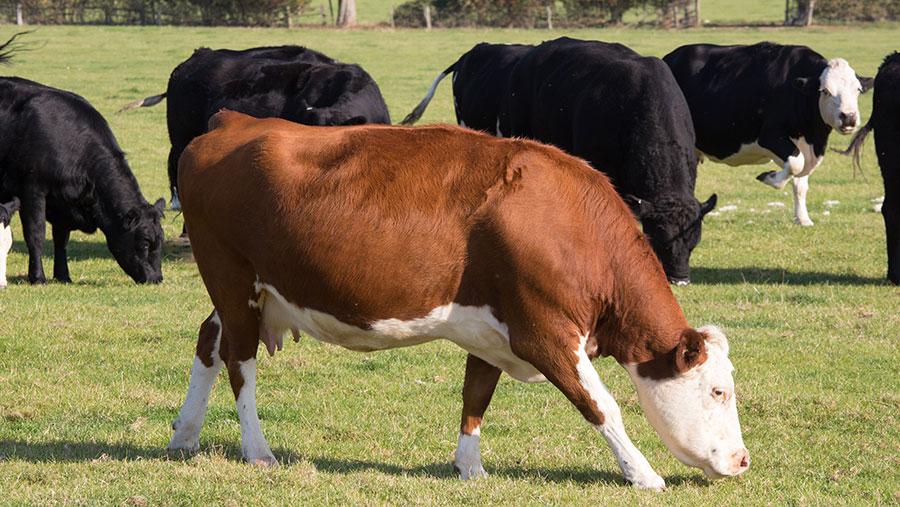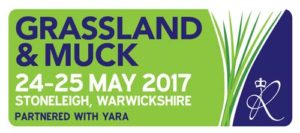Beef producers urged to make more from grass to cut costs
 © Tim Scrivener
© Tim Scrivener Beef producers could substantially improve profitability by making more from grazed grass, according to AHDB figures.
Grazed grass costs just £57/t of dry matter, compared with up to £140/t for a 16% protein cattle ration.
In order to make the most from grass, then good grass management principles apply, says Sarah Pick, scientific officer at AHDB Beef & Lamb, who will be speaking at this year’s Grassland & Muck Event.
See also: Buyer’s guide to grass measuring equipment
She says the first step is to plan the grazing season: calculate how much grass is available, set up a rotation and keep a close eye on grass growth rates.
Good infrastructure
“Identify which fields are producing the most grass and coincide your rotation with that,” she suggests. “Good infrastructure will ease management.”
It is also important to calculate how many cattle the grazing platform can support.
While mid-pregnancy cows need to be allocated 1.5% of their body weight in dry matter intake per day, late lactation cows should eat 2% of their body weight.
Early to mid-lactation cows need 2.5% and growing cattle should have 3% per day. An average weight, number of stock in the group and area available need to be used as part of the calculation to plan stocking.
The ideal time to turn stock out is when pasture reaches 2,500kg/ha of dry matter; around ankle height, says Miss Pick.
“When grass grows past this, utilisation and feed quality drops rapidly.” Ideally, farmers should then take this pasture out of the rotation and shut it up for silage.
Fresh pasture
Cows should graze down to about 1,500kg DM/ha (around 4cm), and be moved to fresh pasture at regular intervals. If there is too little grass, cattle will be forced to eat lower, which will prevent regrowth, so farmers should consider supplementary feeding where grass growth is insufficient.
Nutrition is key both to grass growth and quality. “As a guide, the maximum usage of nitrogen for grass silage is 2.5kg/day of active growth, so 50 days between application and cutting would require 125kg/ha of N.”
Beef farmer Matt House has switched his beef herd to rotational grazing at Bowden Farms, Templecombe, Somerset.
“Dairy farmers have been utilising grass to the maximum for years, but the beef industry has been slower to take this up,” he says. “There are low returns in the beef sector, so we need to do something different to cut our costs.”
Mr House is taking part in AHDB Beef & Lamb’s ‘beef from grass’ project, which has involved soil sampling and setting up a nutrient management plan on the farm.
He has switched to year-round rotational grazing, moving the cows every 24-48 hours. He monitors grass growth on a weekly basis, using the data to generate a growth and demand profile.
“This allows us to make the best use of the grass, whether for grazing or conservation,” he says.
“Moving to a year-round grazing system has been a steep learning curve but has saved on feed, fuel and labour and is the best thing I could have done.”
Sarah Pick and Matt House will be speaking at 13:30 on Thursday 25th May in the forum programme at the Grassland & Muck Event (24-25 May).
Richard Simpson from Kingshay will also be speaking on maximising milk from forage, at 12.30 on both days.
Tickets are now on sale and visitors can save £4 per adult ticket by purchasing in advance.
For more information visit the Grassland & Muck Event website.

